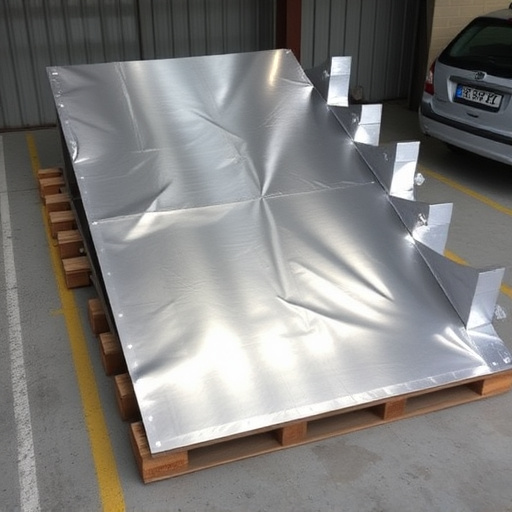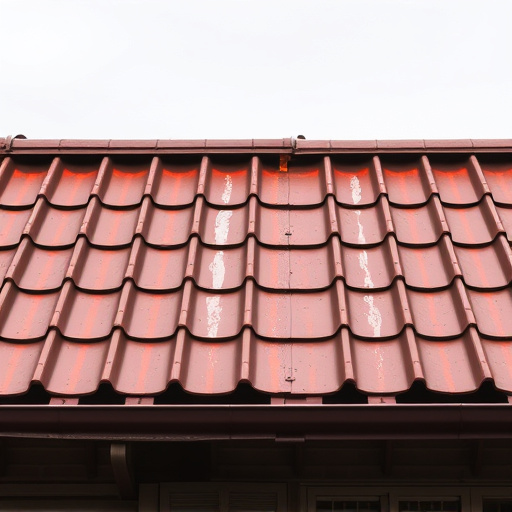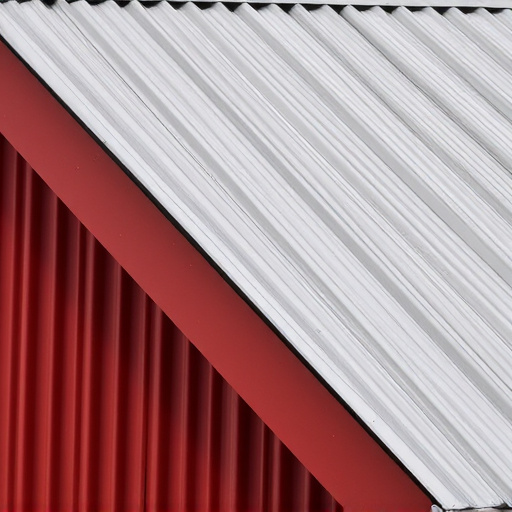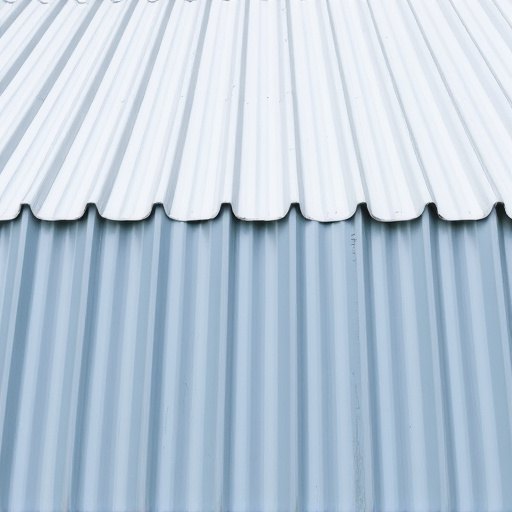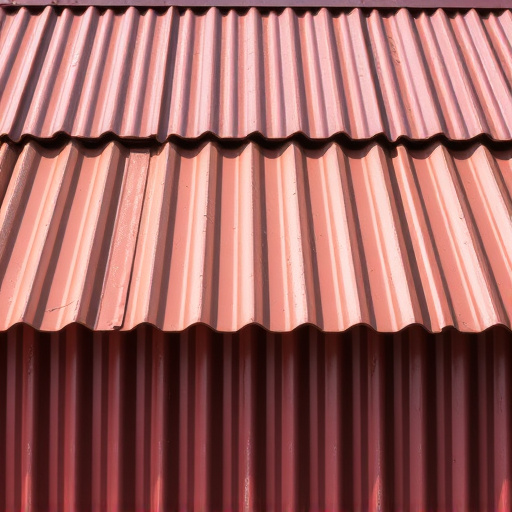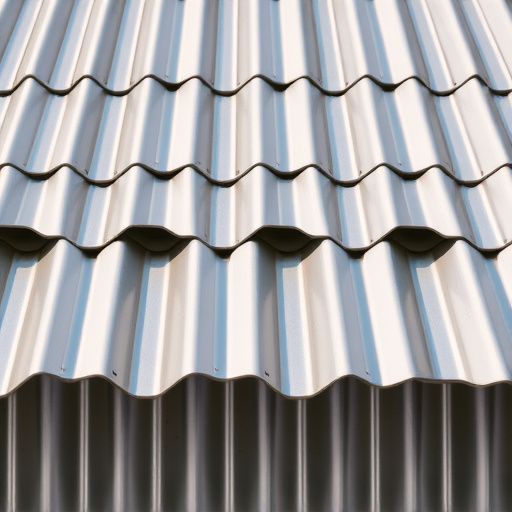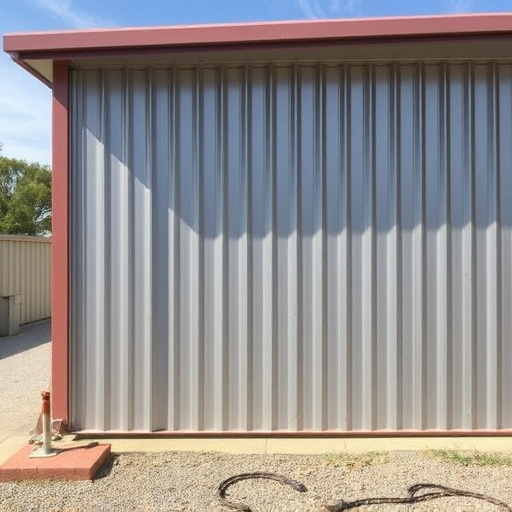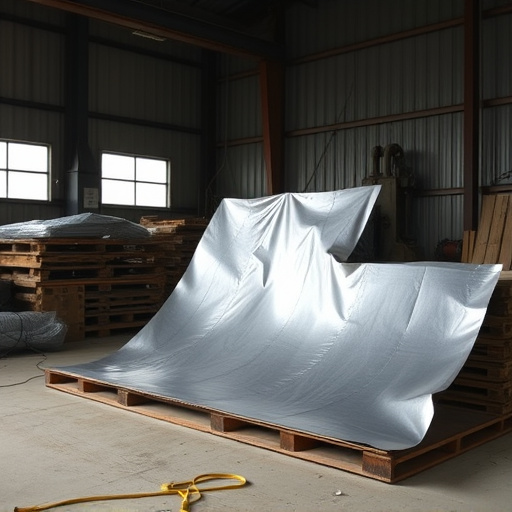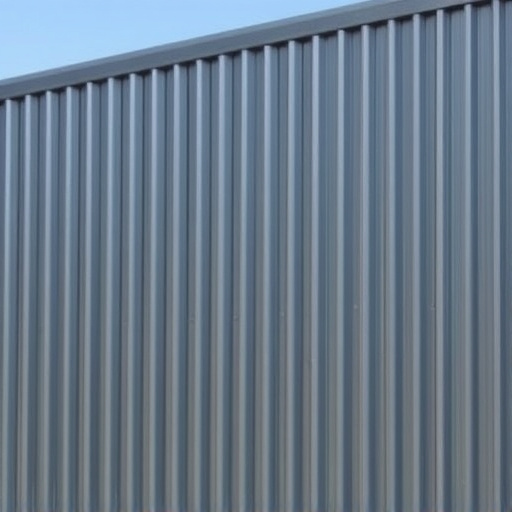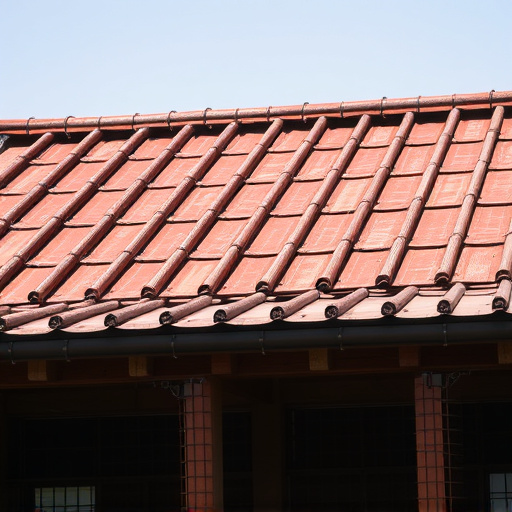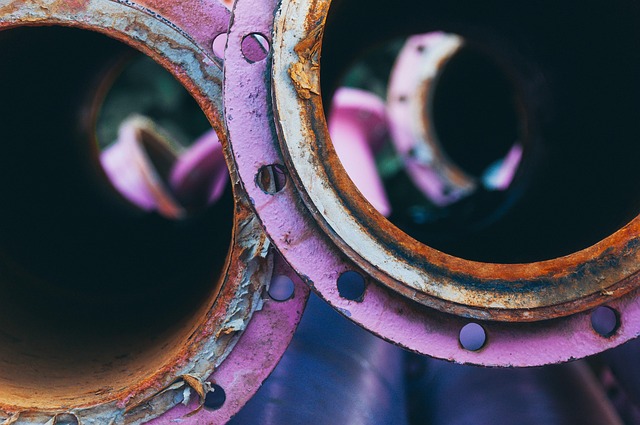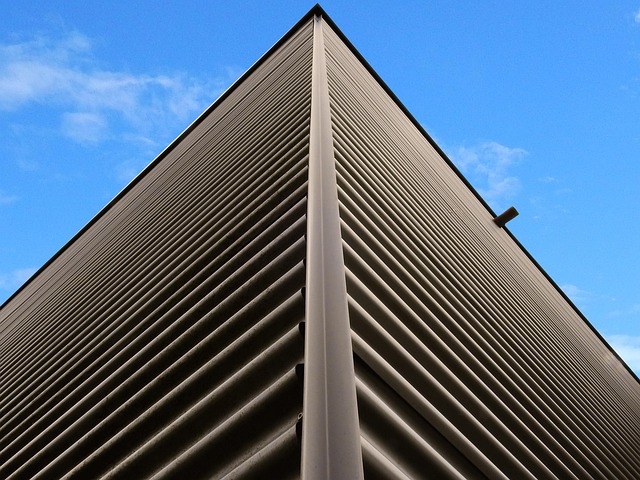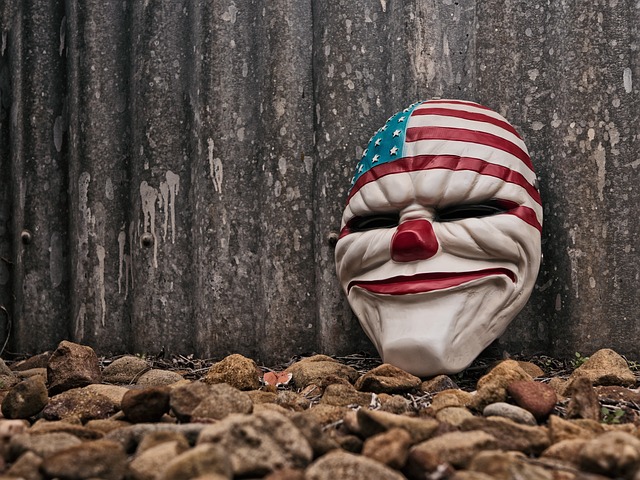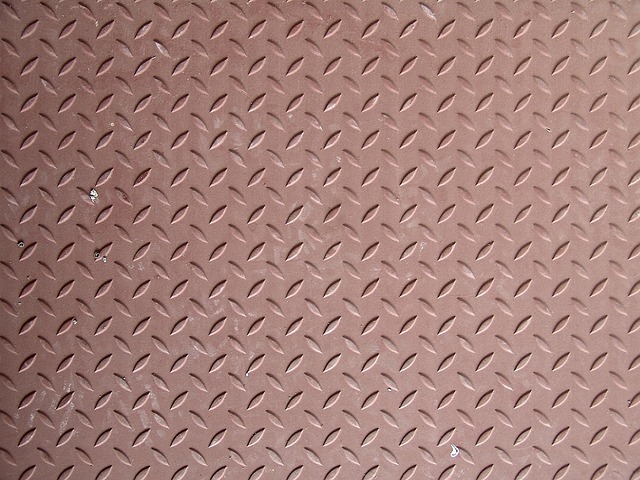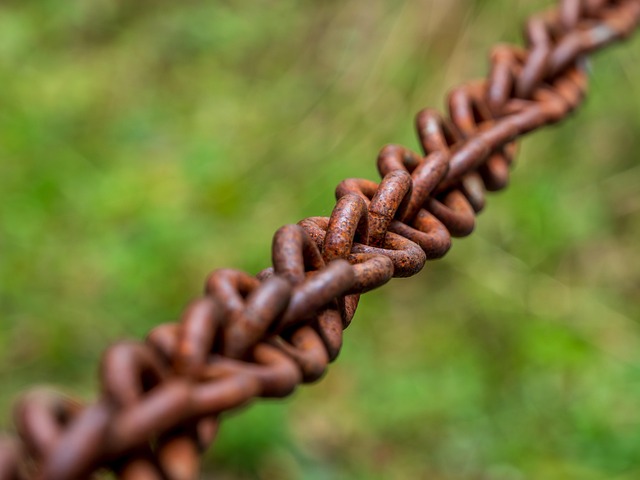Corrugated Galvanised Iron Bendigo: A Comprehensive Exploration
Introduction
Welcome to an extensive exploration of a remarkable material that has left its mark on various industries worldwide—Corrugated Galvanised Iron (CGI) specifically sourced from Bendigo, Australia. This article aims to dissect the multifaceted nature of CGI, its global impact, and its ever-evolving role in modern infrastructure development. Through a structured analysis, we will uncover the secrets behind its success, the challenges it faces, and the exciting prospects that lie ahead. By delving into these aspects, we hope to provide valuable insights for professionals, policymakers, and enthusiasts alike.
Understanding Corrugated Galvanised Iron Bendigo: Unveiling the Basics
Definition:
Corrugated Galvanised Iron (CGI) is a robust and versatile building material composed of iron sheets with a corrugated profile that has undergone galvanisation to enhance its durability and corrosion resistance. The process involves rolling or pressing the metal into ridges, typically in a zigzag pattern, followed by applying a layer of zinc coating through hot-dip galvanisation. This technique not only adds strength but also significantly prolongs the life of the material, making it ideal for outdoor applications.
Core Components and Construction:
- Iron Sheets: The foundation is laid with high-quality iron sheets, which are lightweight yet exceptionally strong. These sheets are carefully selected to ensure they meet specific industry standards for structural integrity.
- Corrugation: The sheets are then corrugated, a process that involves forming ridges and grooves in the metal. This design element enhances the material’s strength and rigidity while also providing better grip for screws, bolts, and other fasteners.
- Galvanisation: After corrugation, the iron is coated with zinc through hot-dip galvanisation. This process immerses the metal in a bath of molten zinc, creating a protective layer that prevents rust and corrosion. Galvanised iron has been renowned for its longevity, especially in harsh environmental conditions.
Historical Context:
The concept of corrugated metal roofing dates back to the 19th century, but it was in the mid-20th century that CGI gained widespread recognition. The post-World War II era saw a surge in construction activities worldwide, leading to an increased demand for affordable and durable building materials. Corrugated iron, already used in rural areas, started making its way into urban settings as developers sought cost-effective solutions for residential and commercial buildings. Over time, advancements in galvanisation techniques further refined CGI’s performance, making it a preferred choice in various industries.
Significance:
CGI holds a pivotal position in infrastructure development due to several key reasons:
- Cost-Effectiveness: It offers an economical alternative to traditional building materials like timber and steel, especially for large-scale projects where material costs can be a significant factor.
- Durability: The galvanisation process significantly extends the lifespan of iron, making CGI resistant to rust and corrosion, even in challenging weather conditions.
- Versatility: This material can be used in various applications, from roofing and cladding to bridge construction and water storage tanks. Its versatility allows for creativity in design and functionality.
- Lightweight Construction: Corrugated iron is relatively lightweight, reducing the structural load on buildings and making it easier to handle during installation.
Global Impact and Trends: A World Embracing CGI
International Influence:
Corrugated Galvanised Iron Bendigo’s impact extends far beyond Australia’s borders. Its global appeal can be attributed to several factors, including its proven track record, cost-effectiveness, and adaptability to different climates. Today, CGI is a ubiquitous presence in many countries, contributing to the construction of everything from humble residential rooftops to iconic industrial structures.
Regional Trends:
- Asia-Pacific: The Asia-Pacific region, with its rapid urbanisation and growing middle class, has witnessed a surge in CGI demand. Countries like China, India, and Indonesia have extensively used CGI in their infrastructure development projects due to its affordability and quick installation capabilities.
- Europe: In Europe, where traditional building materials have been the norm, CGI is gaining traction as an eco-friendly alternative. Its longevity and reduced environmental impact make it appealing to environmentally conscious developers and policymakers.
- North America: The United States and Canada have seen a rise in CGI usage in agricultural and industrial settings, thanks to its durability and resistance to harsh weather conditions.
- Africa: With its vast open spaces and diverse climates, Africa presents unique challenges for building materials. CGI’s adaptability and affordability make it suitable for various applications across the continent.
Market Dynamics:
The global CGI market is dynamic and competitive, with several key players shaping its landscape:
| Region |
Major Producers |
Market Share (Approx.) |
| Asia-Pacific |
China Steel, JFE Steel (Japan) |
40% |
| Europe |
ArcelorMittal, ThyssenKrupp |
25% |
| North America |
US Steel, ArcelorMittal USA |
15% |
| Rest of the World |
Various regional producers |
20% |
Economic Considerations: Unlocking CGI’s Financial Potential
Market Analysis:
The economic significance of Corrugated Galvanised Iron Bendigo is profound, with its use contributing to cost savings and efficient project execution. The market dynamics are influenced by several factors:
- Material Prices: Iron ore prices, a primary raw material, play a crucial role in CGI’s production cost. Fluctuations in global metal markets can impact the overall pricing strategy for developers and manufacturers.
- Supply and Demand: The balance between supply and demand varies across regions, leading to price variations. High demand in certain areas may drive up prices, while overproduction or alternative materials can exert downward pressure.
- Local Incentives: Governments worldwide offer incentives to promote the use of eco-friendly building materials like CGI. Tax benefits, subsidies, and green building initiatives encourage developers to opt for these materials, fostering market growth.
Investment Patterns:
CGI has attracted significant investment due to its economic viability and environmental benefits:
- Infrastructure Development: Governments worldwide are investing heavily in infrastructure projects, including roads, bridges, and public buildings. CGI’s cost-effectiveness and speed of installation make it an attractive choice for such ventures.
- Industrial Applications: Factories and industrial facilities require robust yet economical roofing and cladding solutions. CGI meets these criteria, leading to increased adoption in manufacturing hubs.
- Residential Projects: With the rise of affordable housing initiatives, CGI is gaining popularity as a cost-efficient alternative to traditional roofing materials.
Economic Impact:
The economic impact of CGI extends beyond direct material sales:
- Job Creation: The production and installation of CGI contribute to employment opportunities in manufacturing, construction, and related sectors.
- Reduced Maintenance Costs: CGI’s longevity translates into reduced maintenance expenses for building owners, making it a financially prudent choice over the long term.
- Environmental Sustainability: Its use contributes to more sustainable construction practices, potentially leading to greener cities and reduced carbon footprints.
Technological Advancements: Enhancing CGI’s Capabilities
Innovation in Galvanisation:
Technological advancements have played a pivotal role in improving CGI’s performance and opening up new possibilities:
- Advanced Galvanisation Techniques: Modern galvanisation processes, such as electrogalvanisation and hot-dip galvanising with improved zinc alloys, offer enhanced corrosion resistance and better aesthetics. These techniques ensure longer-lasting protection for the iron, even in harsh marine environments.
- Galvanised Steel Coatings: Researchers are exploring innovative coatings that can be applied over galvanised steel, further enhancing its performance. These advanced coatings provide added protection against chemicals, weathering, and environmental stressors.
Digital Design and Manufacturing:
The digital revolution has also impacted CGI production:
- Computer-Aided Design (CAD): CAD software allows for precise design and engineering of CGI structures, ensuring optimal material utilisation and enhanced structural integrity.
- 3D Printing: While not yet widely adopted, 3D printing technology offers the potential to create intricate CGI components, custom designs, and reduced waste during production.
- Smart Factories: The integration of smart factory technologies can optimise CGI manufacturing processes, improve efficiency, and reduce overall costs.
Future Prospects:
Technological advancements are set to shape the future of Corrugated Galvanised Iron:
- Eco-Friendly Coatings: There is a growing focus on developing eco-friendly coatings that not only enhance protection but also contribute to energy savings and reduced environmental impact.
- Modular CGI Systems: Modular designs allow for easier installation, faster project completion, and potential disassembly/reassembly, making CGI more versatile.
- Smart Buildings: Integrating CGI into smart building technologies can enable self-repairing and adaptive structures, enhancing their longevity and functionality.
Policy and Regulation: Navigating the Legal Landscape
Key Policies and Regulations:
The use of Corrugated Galvanised Iron Bendigo is guided by various policies and regulations, which vary across jurisdictions but share common goals:
- Building Codes: Local building codes dictate the acceptable materials for construction, including CGI. These codes ensure safety standards and structural integrity.
- Environmental Regulations: Many countries have strict environmental guidelines that influence the production and use of building materials. The focus is on minimising waste, promoting recycling, and adopting eco-friendly practices.
- Import/Export Controls: Some governments impose tariffs or quotas on imported CGI to protect domestic steel industries while ensuring a stable supply for developers.
Impact on Development:
These policies have a significant bearing on CGI’s role in infrastructure development:
- Safety and Quality Assurance: Building codes ensure that CGI products meet specific performance criteria, safeguarding occupants’ safety.
- Sustainability Promotion: Environmental regulations encourage the use of eco-friendly materials like CGI, aligning with global sustainability goals.
- Market Stability: Policies help maintain a balanced market by controlling import/export flows and ensuring local production meets demand.
Regulatory Challenges:
Despite their benefits, policies and regulations present challenges:
- Compliance Costs: Developers and manufacturers must invest in training, equipment, and processes to meet regulatory standards, potentially increasing project costs.
- Regional Disparities: Variations in building codes and environmental regulations across regions can create complexities for CGI suppliers aiming for a global reach.
- Rapid Technological Change: Keeping up with evolving technologies and adapting policies accordingly is an ongoing challenge for policymakers.
Challenges and Criticisms: Overcoming Obstacles
Common Concerns:
While Corrugated Galvanised Iron Bendigo has numerous advantages, it also faces criticism and challenges that must be addressed to ensure its continued success:
- Aesthetics: Traditional CGI roofing may not appeal to developers or homeowners seeking visually appealing exterior designs. This concern is driving innovations in the design of CGI to enhance its aesthetic value.
- Limited Customisation: The standard corrugated profile limits the ability to create unique shapes, which can be a drawback for architects and designers.
- Weight: Despite being lightweight compared to some alternatives, CGI may still be considered heavier than other materials, influencing structural considerations during design.
Strategies for Improvement:
| Challenge |
Proposed Solutions |
| Aesthetics |
Developing advanced galvanisation techniques and creating diverse visual profiles to cater to different architectural styles. |
| Customisation Limited |
Encouraging modular designs and utilising 3D printing for custom CGI components, allowing greater flexibility in design. |
| Weight Concerns |
Exploring composite materials or lightweight steel alloys to reduce the overall weight of CGI structures while maintaining strength. |
Case Studies: Real-World Success Stories
Case Study 1: The Green Bridge Restoration
A historic bridge in a major European city was undergoing restoration, requiring a durable and eco-friendly roofing solution. Corrugated Galvanised Iron Bendigo was chosen for its longevity and galvanised steel coating, which offered superior corrosion resistance compared to traditional materials. The project successfully restored the bridge’s structural integrity while adhering to stringent environmental regulations.
Key Learnings:
- CGI’s durability and low maintenance requirements are significant advantages in challenging urban environments.
- Compliance with environmental standards is achievable through the use of modern galvanisation techniques.
- Restoring historic structures using CGI can preserve architectural heritage while ensuring long-term structural integrity.
Case Study 2: Sustainable Water Storage in Africa
A non-profit organisation in Africa aimed to provide clean water storage solutions for rural communities. They implemented a CGI tank system, leveraging its cost-effectiveness and durability. The tanks were designed with local input, ensuring cultural sensitivity and practicality. The project was a success, providing communities with reliable water storage and purification systems.
Key Insights:
- CGI’s versatility allows for custom designs tailored to specific needs in resource-limited settings.
- Local manufacturing and community involvement can enhance the sustainability and long-term viability of infrastructure projects.
- Simple yet effective solutions can significantly improve access to essential resources in underserved areas.
Future Prospects: A Glimpse Ahead
The future of Corrugated Galvanised Iron Bendigo appears promising, with several growth areas and emerging trends on the horizon:
- Smart Cities: CGI will play a pivotal role in smart city initiatives, integrating with IoT (Internet of Things) devices for real-time monitoring and adaptive maintenance.
- Renewable Energy Infrastructure: As the world shifts towards renewable energy, CGI can support the development of wind turbines, solar panel arrays, and associated structures.
- 3D Printed CGI: The adoption of 3D printing technology will enable faster production times, reduced waste, and custom designs for niche applications.
- Eco-Friendly Innovations: Developing biodegradable or compostable coatings will align with growing environmental consciousness, offering a sustainable alternative to traditional galvanisation.
- Global Standardisation: Efforts to harmonise building codes worldwide will create opportunities for CGI manufacturers to establish global brands and supply chains.
FAQ: Addressing Common Queries
Q: Is Corrugated Galvanised Iron Bendigo suitable for all climates?
A: While CGI is highly durable, its suitability depends on the specific climate conditions. For instance, in regions with extreme temperatures or high humidity, additional protective coatings may be recommended to ensure optimal performance over the long term.
Q: How does CGI contribute to sustainable development?
A: CGI’s longevity reduces the need for frequent replacements, minimising waste. Its recycled content and potential for reuse further enhance its environmental credentials. Additionally, innovative galvanisation techniques and eco-friendly coatings are driving its sustainability profile.
Q: Can CGI be used in residential roofing applications?
A: Absolutely! CGI has gained popularity in residential roofing due to its cost-effectiveness, durability, and low maintenance requirements. Modern designs offer improved aesthetics, catering to diverse architectural styles.
Q: What is the expected lifespan of Corrugated Galvanised Iron Bendigo?
A: With proper installation and maintenance, CGI structures can last for several decades, often outperforming alternative materials in terms of longevity and structural integrity.
Q: How does CGI compare to other roofing materials in terms of cost?
A: CGI offers competitive pricing, especially for large-scale projects. While initial costs may vary, its durability and reduced maintenance expenses over the long term make it a cost-effective choice.
Conclusion: Embracing a Durable Future
Corrugated Galvanised Iron Bendigo has proven its mettle as a versatile, durable, and economical building material. With technological advancements, innovative designs, and growing environmental awareness, CGI is poised to play an even more significant role in shaping the built environment. As developers, architects, and policymakers embrace these solutions, we can expect to see sustainable, cost-effective, and aesthetically pleasing infrastructure projects across the globe.
Corrugated Galvanised Iron (CGI) is a top roofing choice for Bendigo due to its durability, protective zinc coating, and excellent drainage. Steeline Roofing Centre Bendigo offers a wide range of CGI options suitable for various architectural st…….
Corrugated Galvanised Iron (CGI) is a top choice for building materials in Bendigo due to its durability, versatility, and weather resistance. Steeline Roofing Centre Bendigo offers a wide range of CGI sheets suitable for roofing, cladding, and…….
Corrugated Galvanised Iron (CGI) from Steeline Roofing Centre Bendigo is a top choice for roofing in the region's varied climate. They offer both standard and custom iron sheets, ensuring durability and aesthetic flexibility. CGI's dee…….
Corrugated Galvanised Iron (CGI) sheets from Steeline Roofing Centre Bendigo offer a durable, versatile, and cost-effective roofing solution for both residential and commercial applications. With superior corrosion resistance, easy installation,…….
Steelee Roofing Centre Bendigo is a local provider offering tailored roofing solutions with high-quality materials, especially galvanised roofing iron known for its corrosion resistance and durability. They supply premium roofing iron, ensure ri…….
Steeline Roofing Centre Bendigo is a leading supplier of high-quality galvanised iron products, offering exceptional strength and durability for various roofing and construction applications. Located at 6 Harrien Ct, Epsom VIC 3551, Australia, t…….
Corrugated Galvanised Iron (CGI) is a robust, versatile building material renowned for its strength and longevity in Bendigo and beyond. Steeline Roofing Centre Bendigo at 6 Harrien Ct, Epsom VIC 3551, Australia offers high-quality CGI products…….
Steeline Roofing Centre Bendigo offers top-quality galvanised iron roofing solutions for both residential and commercial projects, combining durability, performance, and aesthetic appeal under Australian conditions. Their comprehensive range of…….
Steeline Roofing Centre Bendigo is a top supplier of high-quality, affordable corrugated iron products for residential and commercial applications. Strategically located at 6 Harrien Ct, Epsom VIC 3551, Australia, they offer excellent customer s…….
Steeline Roofing Centre Bendigo is a top-rated local supplier and retailer of premium galvanised iron products, offering exceptional quality, customer service, and a wide range tailored for both professional contractors and homeowners. Located a…….
Steeline Roofing Centre Bendigo at 6 Harrien Ct, Epsom VIC 3551, Australia, is a leading supplier of high-quality Corrugated Galvanised Iron (CGI) for residential and commercial use. CGI's robust design, enhanced by galvanisation with zinc,…….
Steeline Roofing Centre Bendigo offers high-quality Corrugated Galvanised Iron (CGI) sheets for residential and commercial roofing needs in the region. Known for its superior strength, durability, and weather resistance, CGI is a popular choice…….
Steeline Roofing Bendigo specializes in providing high-quality Corrugated Galvanised Iron (CGI) roofing solutions for residential and commercial properties in the region. CGI sheets, treated with zinc and aluminium during galvanization, offer ex…….
Steelee Roofing Bendigo is your local expert for high-quality Corrugated Galvanised Iron (CGI) roofing solutions in Victoria, Australia. With a range of durable, aesthetically pleasing CGI profiles tailored to any project, their team offers year…….
Steeline Bendigo is a leading supplier of high-quality roofing solutions, specializing in durable and stylish Corrugated Galvanised Iron (CGI) products. Suitable for both residential and commercial projects, their CGI range offers various design…….
Steeline Roofing Centre Bendigo is a leading supplier of high-quality roofing solutions for residential and commercial projects, offering corrugated iron and innovative alternatives. Located at 6 Harrien Ct, Epsom VIC 3551, Australia, they are k…….
Steeline Roofing Centre Bendigo, located at 6 Harrien Ct, Epsom VIC 3551, Australia, is a leading supplier of galvanised iron products for contractors and homeowners. They offer a wide range of high-quality materials with excellent customer serv…….
Steeline Roofing Centre Bendigo is a trusted local supplier offering galvanised iron roofing solutions in Epsom, VIC. Strategically located at 6 Harrien Ct, they provide high-quality materials known for durability and corrosion resistance. Their…….
